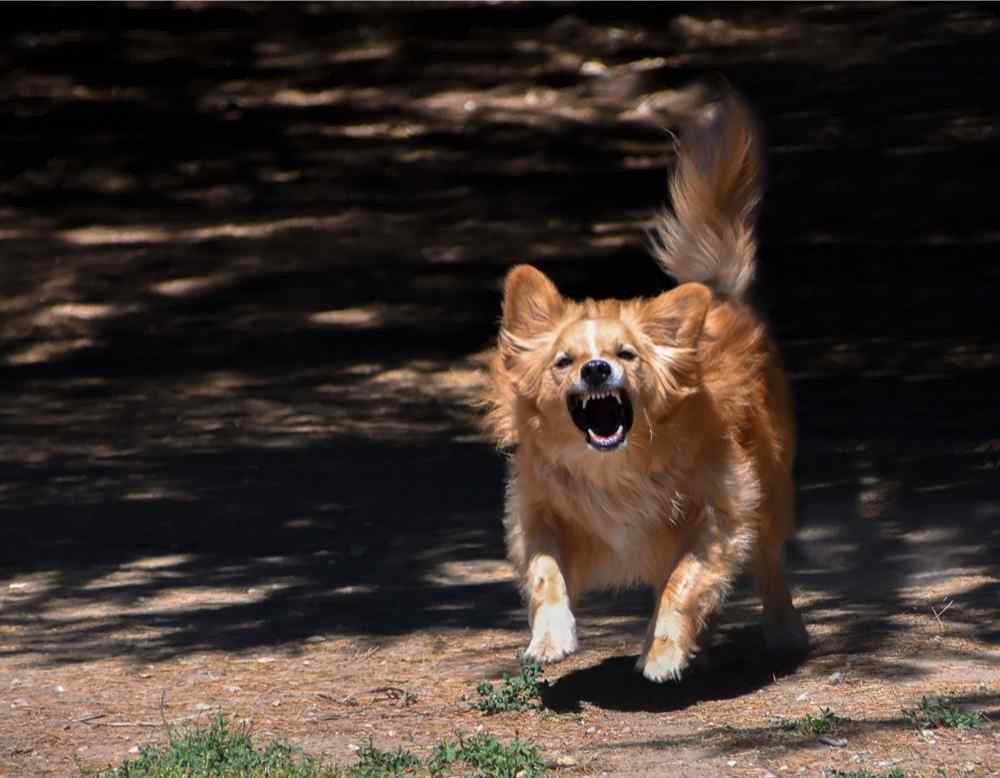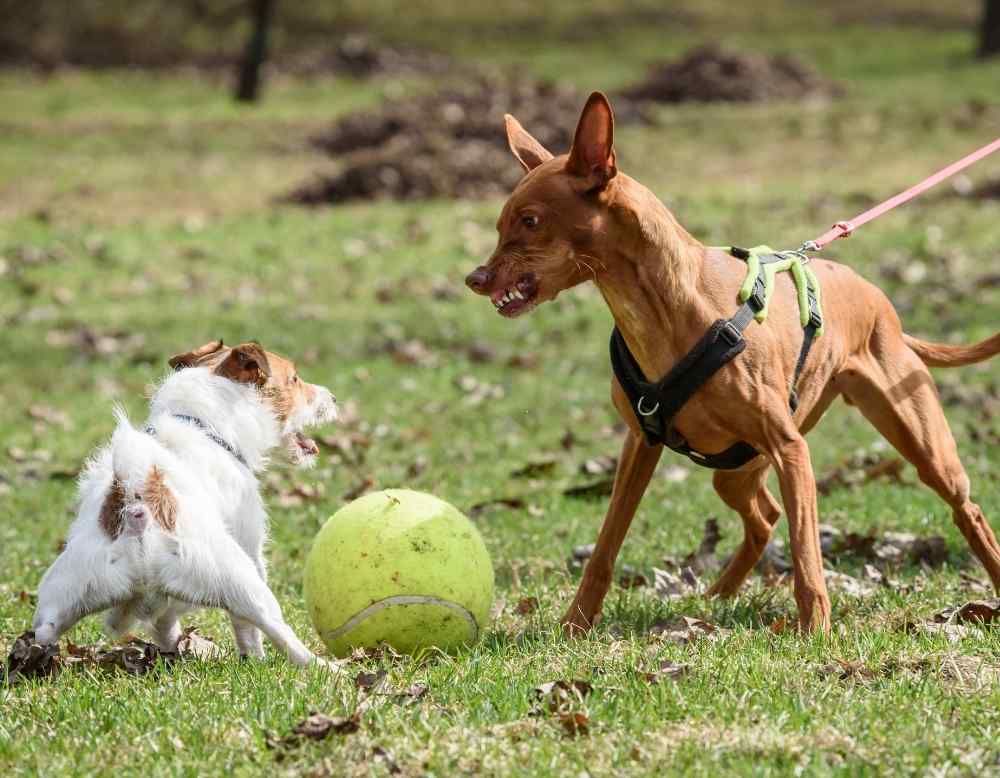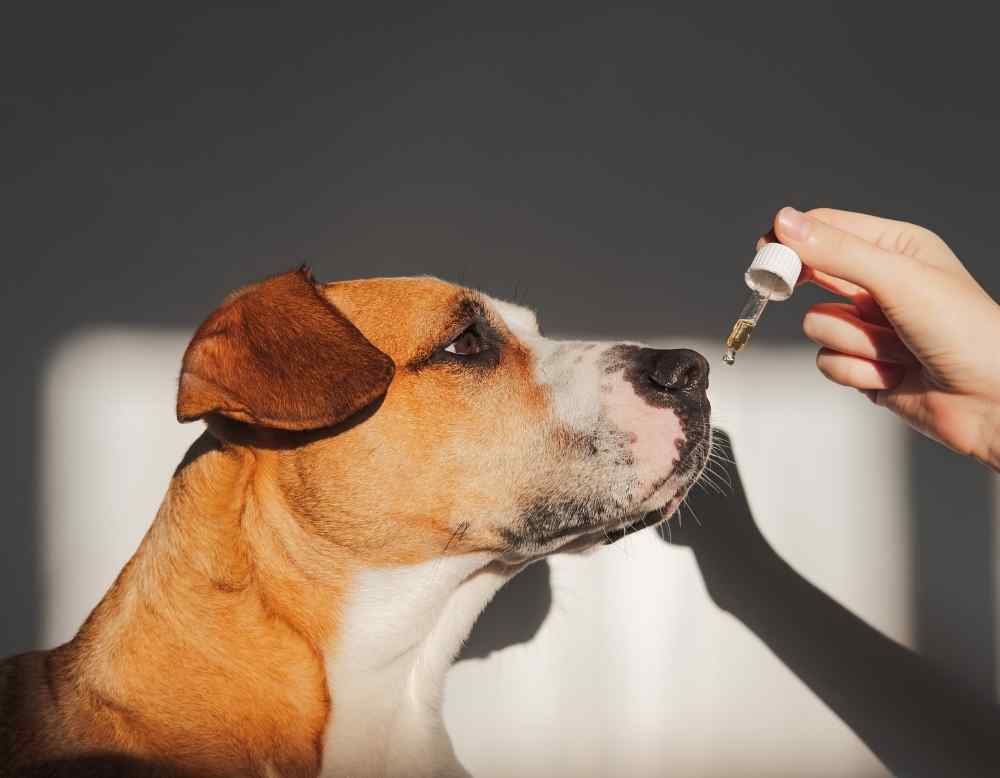How To Calm an Aggressive Dog: Getting Your Pup to Chill Out
You might have a serious behavior problem on your hands if your dog regularly bites, snaps, or growls at you or others. If this is the case for you, we understand the stress and frustration of living with an aggressive dog. You might be at a loss of ideas for how to calm an aggressive dog, but you’re not alone.
Aggression is one of the highest-ranking reasons that dog parents seek the help of animal behaviorists and professional dog trainers. And don’t be fooled. It’s not just the so-called “dangerous breeds” or the larger dogs that are generally prone to aggression; any dog breed is capable of terrifying aggression, given the right circumstances. Even the world’s best trainer can’t cure aggression overnight, but there are many ways to help your dog remain calm and curb aggressive behavior.
What is Dog Aggression?
When someone mentions that their dog is aggressive, the first thing that comes to mind is likely that the dog bites, but this isn’t the case across the board. As you’ll learn in this article, aggression can mean many different things. Some canines tend to attack other dogs or even people, while others never act out more than the occasional growl.
The most important thing for dog parents to understand is what triggers aggressive behavior from their dog, regardless of which signs they display. There are a handful of various reasons a dog might display aggressive behavior, and identifying its underlying cause may make treatment much easier and more efficient.
Dog aggression may be one of the most serious behavioral issues that you’ll have to deal with. It is one of the more difficult issues to handle, but it is only a behavioral problem that can be corrected. Proper training can be extremely beneficial to help calm your aggressive dog.

What Causes Aggression in Dogs?
Understanding why your dog is becoming aggressive is the first step in putting together the best plan for stopping this threatening behavior. There are a handful of reasons that your dog might start acting uncharacteristically aggressive. Some common causes of canine aggression include, but are not limited to:
- Illness and injury
- Fear
- Possessiveness
- Show of dominance
- Frustration
Types of Aggression in Dogs
More often than not, there is a relatively common reason for a given type of aggressive canine behavior. For example, a dog that establishes dominance by being aggressive might exhibit that dominance by lashing out when on a leash, being unfriendly with new family members, or even attacking other dogs.
To better prevent and treat your pup’s aggression and understand what motivates your dog’s bad behavior, figuring out which type of dog aggression you may be dealing with will be essential.
Fear or Defensive Aggression
Just like with humans, fear can be an extremely powerful motivator for aggression in dogs. A nervous dog will typically turn to a fight or flight response when faced with a scary situation – and fear-aggressive dogs will almost always choose to fight.
Fear aggression in dogs, unlike most other types of canine aggression, has no warning signs. Most scared dogs will only react when they can’t see another option but defend themselves. In most cases of this type of aggression, the behavior is caused by a trauma in the dog’s past. Dogs reacting in this way won’t snarl, growl, or bare their teeth before they bite at their source of fear.
Related: Dog Scared of Thunder [How To Help Them Stay Calm!]
Territorial
Territorial dogs also tend to react aggressively when perceived intruders enter their turf. Depending on the gravity of the problem, the reactions can range from a full-on attack that includes biting to simple growling accompanied by a dirty look.
Interdog
When it comes to interdog aggression (sometimes called social aggression), it’s all about instincts. Dogs are extremely social animals who function best in packs. Because of this, there is often a strict hierarchy in any household with one or multiple dogs, even if you’re not aware of it. A dominant dog may sometimes try to “remind” any lower-status pets of who the boss is now and then display aggressive body language.
In some cases, a particularly daring dog may lash out at a human that they see as the runt of their pack. When these instances pop up, the key is to be assertive and act as the pack leader rather than submitting to the dog’s aggression like a two-legged beta.
Possessive
Sometimes referred to as resource guarding, this behavior is primarily centered around the dog’s obsession with certain objects. The item in question could potentially be their favorite food bowl, bed, or toy, but the outcome is generally always the same; Once another pet or person approaches their belongings, possessive dogs will react immediately.

Playful
When dogs play, it sometimes takes the form of wrestling, play biting, and play fighting. Although this may be harmless fun, it can sometimes intensify into more serious and dangerous scraps if you don’t observe your dog closely.
When encountering an aggressive moment between dogs, taking a step back and allowing them to work it out independently is often not enough. It’s always better to keep the pups safe and intervene rather than letting them continue to engage in a potentially dangerous situation.
Predatory
Predatory aggression is the canine behavior characterized by a locked-on stare at a target creature, silent predator-like movement, and a quick grab-bite to the abdomen or jugular – the vital organs. A hallmark of this type of behavior is the dog’s sudden explosion of impulsive action. This may be the only type of aggression that many dogs ever show.
While this form of aggression is as natural as playful aggression, it is significantly more dangerous because dog parents cannot train, medicate, or counter condition it out of them. Even a dog who has been commanded to sit or stay around a cat that they see as prey will still chase the cat down eventually.
Should I Be Concerned If My Dog is Aggressive?
An untreated dog with aggressive tendencies can lead to increased stress levels, depending on what is triggering the aggressive behavior. An aggressive dog whose behavior is not corrected or monitored could pose a very real threat to themselves and others around them.
Physically injured dogs pose a much higher risk of injuring a well-meaning person. This is because approaching a dog in physical pain can easily cause the dog to go into fight or flight mode, especially if the approaching person is a stranger that the dog doesn’t recognize.
Because showing weakness or injury in the wild could get an animal killed, dogs (and many other animals) tend to hide their pain as a survival instinct. This makes it essential to be watchful around your dog and make sure they are not hiding their pain.
How to Treat Dog Aggression
The most effective and safest way to treat your dog’s aggression problem is to begin behavior modification training, under the guidance of a qualified professional, of course. Modifying a dog’s behavior involves rewarding them for good behavior—so if your dog enjoys praise, treats, and toys, you’ll likely find your fair share of success.
Dogs who aren’t particularly motivated by the usual rewards can be especially challenging for people to work with. In truth, the likelihood of such a dog getting better is small. Make a note of when the circumstances surrounding the behavior change and your dog becomes aggressive, as this will play an important part in determining your next step.
Getting to the root and the underlying cause of your dog’s aggression is an essential part of the process. It is just as important for dog parents to remember that the behavior is just a symptom of an underlying problem that you can solve with proper training. There are several ways you can help your dog remain calm and manage their hostility. It will take time and consistency, and you must be open and prepared to the idea of enlisting a professional’s help.

Can I Use CBD to Calm an Aggressive Dog?
One of CBD’s most well-known benefits is its ability to create a sense of calm and relaxation when ingested. CBD is a naturally occurring compound that works by interacting with a system that all mammals have in their bodies. It is just as safe for pet animals such as dogs, cats, and horses as it is for us humans!
If you’re having trouble dealing with an aggressive dog, perhaps consider feeding them CBD calming chews for dogs. CBD dog treats + stress and anxiety relief may also be a good option especially if the aggression seems fear or defensive related. These treats induce a calming sensation for pets. Or try resolving aggressive tendencies by placing a few drops of CBD oil into their food.
Related: CBD Dog Treats Near Me: Best CBD Dog Treat Buying Guide
What is CBD
Cannabidiol (CBD) is a type of “cannabinoid”, a naturally occurring compound extracted from the cannabis plant. CBD comes from hemp plants, which have less than 0.3% THC content. It doesn’t induce a “high” or any form of intoxication, unlike its more well-known cannabinoid cousin, THC.
How Does it Work?
CBD works by supporting and interacting with a naturally occurring system found in all mammals called the endocannabinoid system (ECS). This system has many essential responsibilities to keep the human body running smoothly, including regulating memory, mood, and appetite.
CBD can potentially help calm the mind and alleviate nervous tension, discomfort, and mental distress. These factors could potentially be responsible for your pup’s recent aggressive behaviors. Using CBD could be key in how to calm your aggressive dog.
Is CBD Legal?
CBD is legal! Thanks to the 2018 Farm Bill that made federally legalized all hemp-derived CBD products containing 0.3% THC or less. Consumers should keep in mind that each individual state enforces its legislation and policies concerning CBD.
Final Thoughts – How to Calm an Aggressive Dog
While living with an aggressive dog may not be easy, you can get a handle on the situation, we promise! Although sometimes it might seem scary, it is just a behavioral problem. And you can almost always resolve behavioral problems with proper training and socialization.
Your dog may just be a scared, hurt, or poorly socialized pup underneath that snapping and snarling. When given a chance, any nervous or aggressive dog can make a behavioral change for the better! Depending on how severe your dog’s aggression is, the solution can range from training to a simple routine change. Just remember: making an effort is well worth it.
Read Next: How to Calm a Hyper Dog [5 Easy Ways To Chill Your Pup Out]





